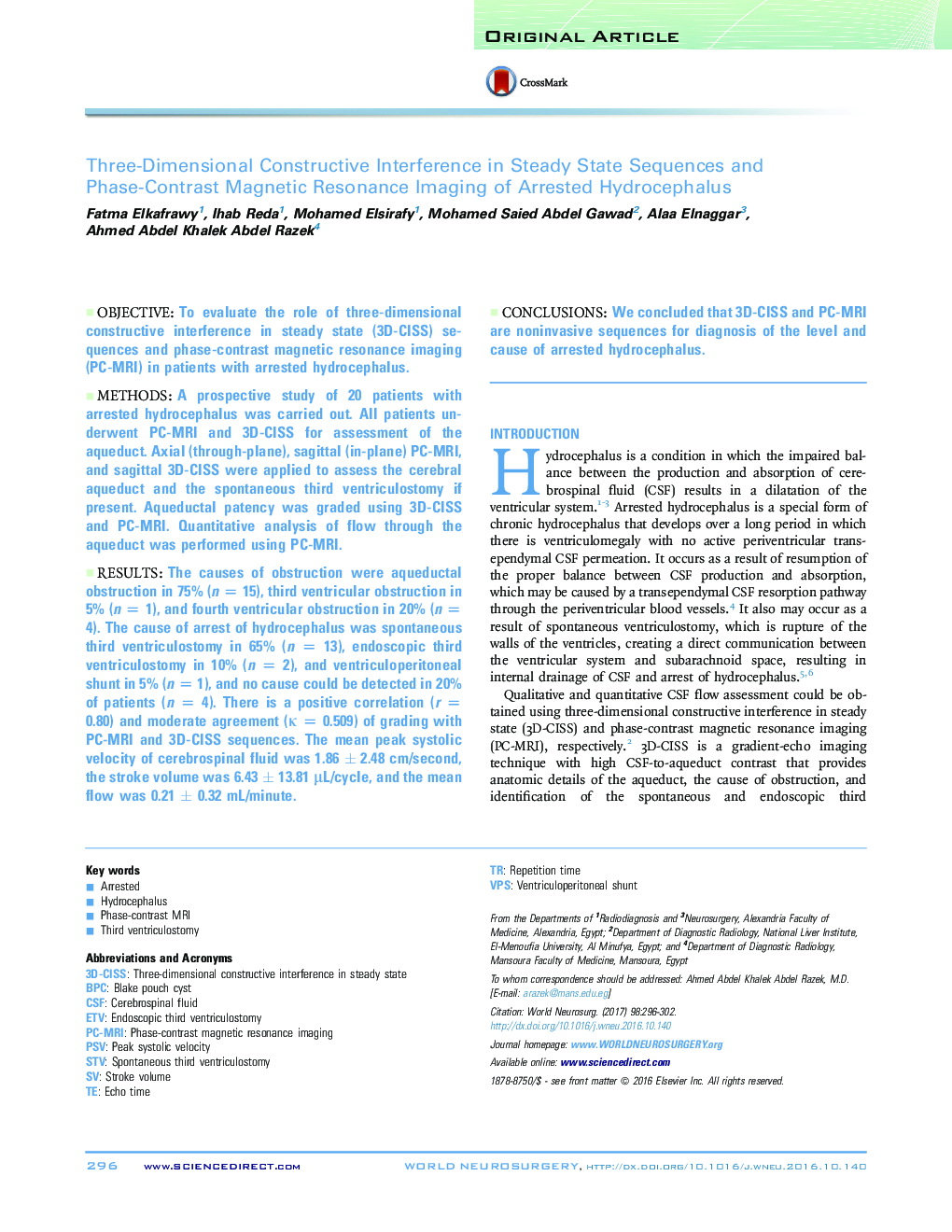| Article ID | Journal | Published Year | Pages | File Type |
|---|---|---|---|---|
| 5634935 | World Neurosurgery | 2017 | 7 Pages |
ObjectiveTo evaluate the role of three-dimensional constructive interference in steady state (3D-CISS) sequences and phase-contrast magnetic resonance imaging (PC-MRI) in patients with arrested hydrocephalus.MethodsA prospective study of 20 patients with arrested hydrocephalus was carried out. All patients underwent PC-MRI and 3D-CISS for assessment of the aqueduct. Axial (through-plane), sagittal (in-plane) PC-MRI, and sagittal 3D-CISS were applied to assess the cerebral aqueduct and the spontaneous third ventriculostomy if present. Aqueductal patency was graded using 3D-CISS and PC-MRI. Quantitative analysis of flow through the aqueduct was performed using PC-MRI.ResultsThe causes of obstruction were aqueductal obstruction in 75% (n = 15), third ventricular obstruction in 5% (n = 1), and fourth ventricular obstruction in 20% (n = 4). The cause of arrest of hydrocephalus was spontaneous third ventriculostomy in 65% (n = 13), endoscopic third ventriculostomy in 10% (n = 2), and ventriculoperitoneal shunt in 5% (n = 1), and no cause could be detected in 20% of patients (n = 4). There is a positive correlation (r = 0.80) and moderate agreement (κ = 0.509) of grading with PC-MRI and 3D-CISS sequences. The mean peak systolic velocity of cerebrospinal fluid was 1.86 ± 2.48 cm/second, the stroke volume was 6.43 ± 13.81 μL/cycle, and the mean flow was 0.21 ± 0.32 mL/minute.ConclusionsWe concluded that 3D-CISS and PC-MRI are noninvasive sequences for diagnosis of the level and cause of arrested hydrocephalus.
